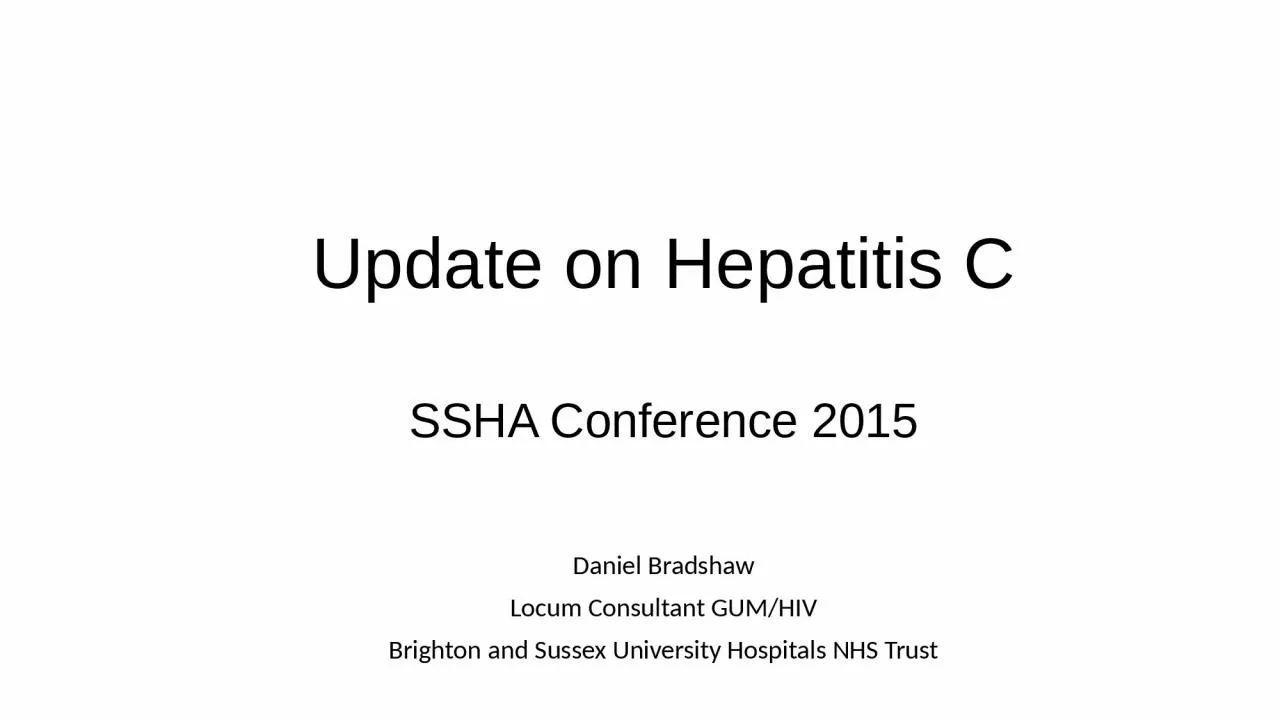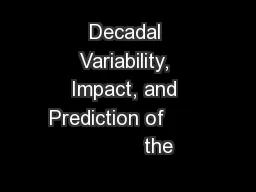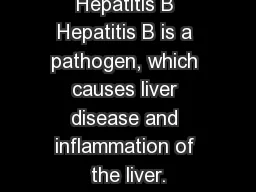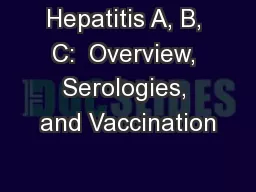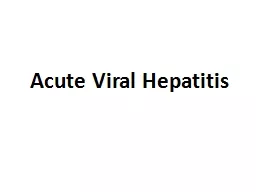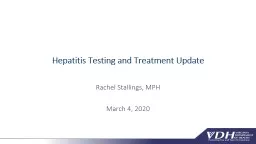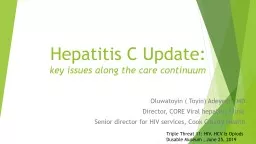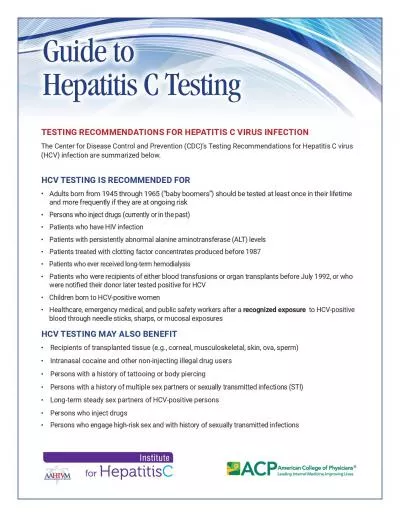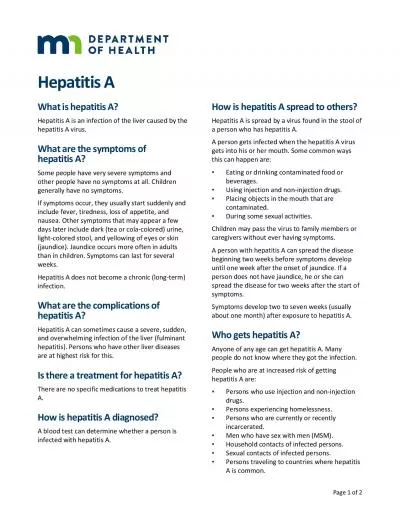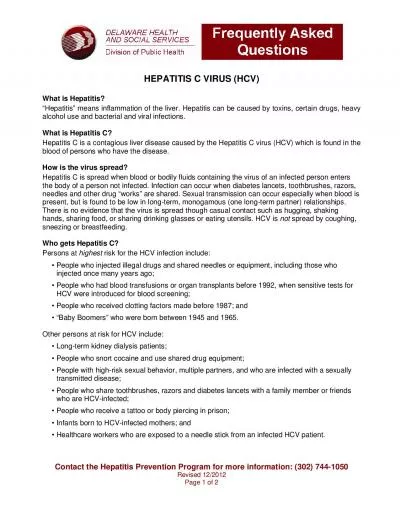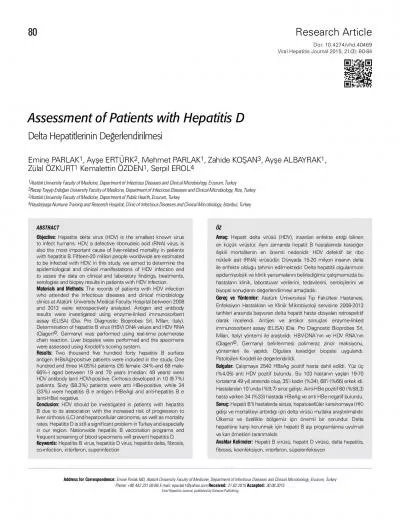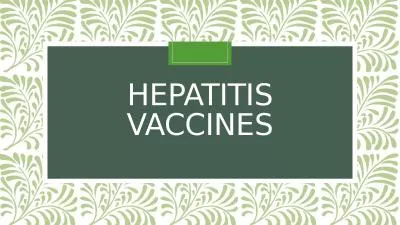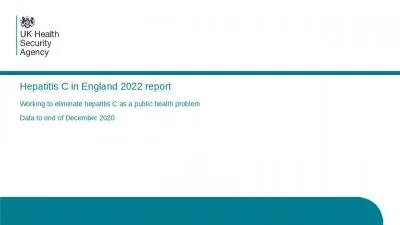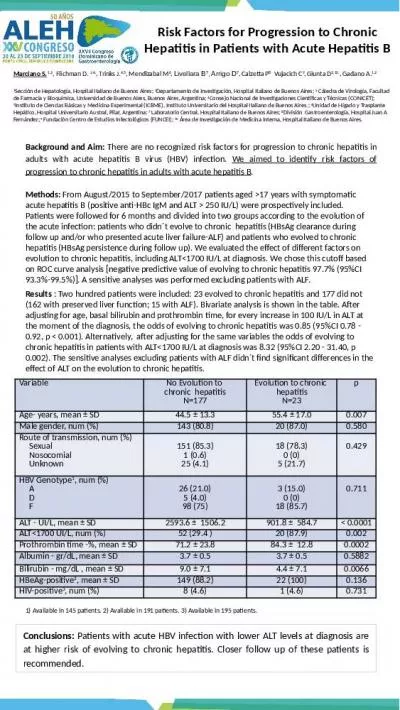PPT-Update on Hepatitis C SSHA Conference 2015
Author : Hiphopkid | Published Date : 2022-08-03
Daniel Bradshaw Locum Consultant GUMHIV Brighton and Sussex University Hospitals NHS Trust Overview Epidemiology Natural history of HCV Acute HCV in HIVpositive
Presentation Embed Code
Download Presentation
Download Presentation The PPT/PDF document "Update on Hepatitis C SSHA Conference 20..." is the property of its rightful owner. Permission is granted to download and print the materials on this website for personal, non-commercial use only, and to display it on your personal computer provided you do not modify the materials and that you retain all copyright notices contained in the materials. By downloading content from our website, you accept the terms of this agreement.
Update on Hepatitis C SSHA Conference 2015: Transcript
Download Rules Of Document
"Update on Hepatitis C SSHA Conference 2015"The content belongs to its owner. You may download and print it for personal use, without modification, and keep all copyright notices. By downloading, you agree to these terms.
Related Documents

